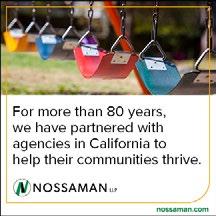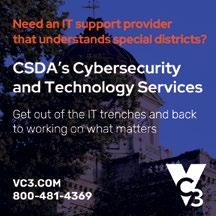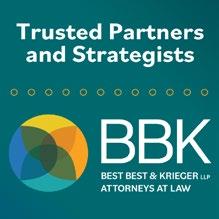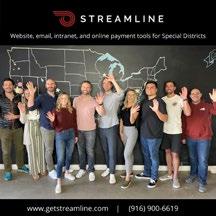






The California Special Districts Alliance is a collaborative partnership between the California Special Districts Association (CSDA), the CSDA Finance Corporation (CSDAFC), and the Special District Risk Management Authority (SDRMA). These three highly respected statewide organizations join forces to help special districts in California better serve their communities.

PETE KAMPA, CSDM, PRESIDENT, Groveland Community Services District
LORENZO RIOS, CSDM, VICE PRESIDENT, Clovis Veterans Memorial District
ANTONIO MARTINEZ, SECRETARY, Contra Costa Water District
DON BARTZ, CSDM, TREASURER, Phelan Pinon Hills Community Services District
ELAINE MAGNER, PAST PRESIDENT, Pleasant Valley Recreation and Park District
RYAN CLAUSNITZER, CSDM, Alameda County Mosquito Abatement District
SCOTT DUFFIELD, CSDM, Heritage Ranch Community Services District
VINCENT FERRANTE, Moss Landing Harbor District
JERRY L. GILMORE, Truckee Sanitary District
CURTIS JORRITSMA, Hilmar County Water District
JO MACKENZIE, Vista Irrigation District
NOELLE MATTOCK, El Dorado Hills Community Services District
GREG P. ORSINI, McKinleyville Community Services District
PATRICK OSTLY, North of River Sanitary District #1
FRED RYNESS, Burney Water District
ARLENE SCHAFER, Costa Mesa Sanitary District
KIMBERLEE SENEY, Gold Mountain Community Services District
KATHRYN SLATER-CARTER, San Mateo County Harbor District
NEIL MCCORMICK, Chief Executive Officer
MEGAN HEMMING, Chief Professional Development Officer
MUSTAFA HESSABI, Chief Counsel
KYLE PACKHAM, Chief Advocacy & External Affairs Officer
CASSANDRA STRAWN, Chief Member Services & Communications Officer
RICK WOOD, Chief Finance & Operations Officer
TOMICKO ABELLA, Member Services Representative
AARON AVERY, Director of State Legislative Affairs
ANNA CALLAHAN, Legislative Assistant
EMILY CHA, Database & Online Communities Specialist
MARCUS DETWILER, Legislative Representative
BRENT FARRAR, Design & Websites Manager
AUBREY GOHL, Member Services Representative
JOSE GUERRERO, Graphic Design/Video Specialist
COLLEEN HALEY, Public Affairs Field Coordinator
CASSIE HASKINS, Member Services Representative
LILIA M. HERNANDEZ, Associate Legislative Analyst
MORGAN LESKODY, Communications Specialist
MICHAEL MEYER, Senior Member Services Specialist
CHRIS NORDEN, Public Affairs Field Coordinator
RICHELLE NOROYAN, Public Affairs Field Coordinator
CHRIS PALMER, Senior Public Affairs Field Coordinator
AMBER PHELEN, Management Analyst
RACHAEL POPPINO, Professional Development Coordinator
OLIVIA ROBERTSON, Member Services Specialist
JENNIFER SMITH, Professional Development Coordinator
OPHELIA SZIGETI, Legislative Analyst
ANTHONY TANNEHILL, Legislative Representative
ERASMO VIVEROS, Public Affairs Field Coordinator
DANE WADLÉ, Senior Public Affairs Field Coordinator
KRISTIN WITHROW, Communications Specialist
SANDY SEIFERT-RAFFELSON, PRESIDENT, Herlong Public Utility District
ROBERT SWAN, VICE PRESIDENT, Groveland Community Services District
JESSE CLAYPOOL, SECRETARY,
Honey Lake Valley Resource Conservation District
ROBERT HOUSLEY, CSDM, Midway City Sanitary District
MIKE SCHEAFER, Costa Mesa Sanitary District
TIM UNRUH, CSDM, Kern County Mosquito & Vector Control District
THOMAS WRIGHT, Clovis Veterans Memorial District
MICHAEL KRONBETTER, Public Financial Management
DEREK BURKHALTER, Bickmore Actuarial
MICHAEL BLOSS, River City Bank
CHRIS WIEGMAN, GroupOne
ANN SIPRELLE, Best Best & Krieger, LLP
KARL SNEARER, Apex Insurance Agency
DOUG WOZNIAK, Alliant Insurance Services, Inc.
BRIAN KELLEY, MBA, ARM, Chief Executive Officer
DEBBIE YOKOTA, CPCU, Chief Risk Officer
MATT CLUTTERBUCK, CPA, MBA, Chief Financial Officer
WENDY TUCKER, AU, Underwriting/Program Manager
ALANA LITTLE, Health Benefits Manager
ENRIQUETA CASTRO, CSP, Risk Control Manager
ROBERTO LOZANO, Liability Claims Manager
ALLISON BATEMAN, PHR, HR/Office Manager
PETR KOVALCHUK, CPA, Finance Manager
JASON THORN, Data Achitect
MARIA WILLIAMS, ARM, Member Services Manager
MARGARITO CRUZ, Senior Accountant
DANNY PEÑA, SIP, WICCA, Workers’ Compensation Claims Manager
ERIC LUCERO, ARM, Senior Risk Control Specialist
TERESA GUILLEN, Program Specialist II
MICHELLE BROWN, Health Benefits Specialist II
CANDICE RICHARDSON, Management Analyst
KEITH IKAMI, Liability Claims Examiner I
LISA SANDOVAL, Member Services Specialist I
LILLI VINN, Accounting Technician
MARTHA WARREN, SIP, WCCA, Senior WC Claims Examiner
TAMARA BAKKIE, SIP, WCCA, Senior WC Claims Examiner
JOHN PESHKOFF, SIP, WCCA, Senior WC Claims Examiner
MARIETTA HARRISON, SIP, WCCA, Future Medical Claims Specialist
CHER DARLING, WC Compensation Claims Assistant
Special District Risk Management Authority 1112 I Street, Suite 300 Sacramento, CA 95814
tel: 800.537.7790 www.sdrma.org
CSDAFC Board and Staff
OFFICERS
JO MACKENZIE, PRESIDENT, Vista Irrigation District
VINCE FERRANTE, VICE PRESIDENT, Moss Landing Harbor District
GREG ORSINI, TREASURER, McKinleyville Community Service District
ARLENE SCHAFER, SECRETARY, Costa Mesa Sanitary District
MEMBERS OF THE BOARD
GLENN LAZOF, Regional Government Services Authority
CONSULTANTS
RICK BRANDIS, Brandis Tallman, a Division of Oppenheimer & Co. Inc.
JEFF LAND Brandis Tallman, a Division of Oppenheimer & Co. Inc.
WILLIAM MORTON, Municipal Finance Corporation
STEFAN MORTON, Municipal Finance Corporation
ALBERT REYES, Kutak Rock LLP
NICOLE TALLMAN, Brandis Tallman, a Division of Oppenheimer & Co. Inc.
STAFF
NEIL MCCORMICK, Chief Executive Officer
MICHAEL MEYER, Senior Member Services Specialist
AMBER PHELEN, Management Analyst
RICK WOOD, Chief Finance & Operations Officer
CSDA Finance Corporation 1112 I Street, Suite 200, Sacramento, CA 95814 tel: 877.924.2732 www.csdafinance.net
For editorial or advertising inquiries: Phone - 877.924.2732 Email - membership@csda.net
California Special Districts Association 1112 I Street, Suite 200 Sacramento, CA 95814 toll-free: 877.924.2732 www.csda.net
What are you most excited about in your new role?
Bringing my 30 years of California Public Finance experience, both at a public entity and in banking, to our clients! I’ve dealt with many of the same challenges that special districts face. My experience working at the State Treasurer’s Office and helping 300+ California entities gives me unique knowledge and connections rarely found at other banks.
Tell us a little bit about your background:
I graduated from Rutgers University with a bachelor’s degree in Agribusiness Management. I relocated to California and worked for the California Department of Finance for 3 years. I then managed the State Treasurer’s Office for 8 years before moving into government banking.
What entities have you worked with?
I’ve worked with a broad range – from the large (State Treasurer’s Office) to mid-sized counties with $300 million in balances, to small districts with fewer than 5 employees.

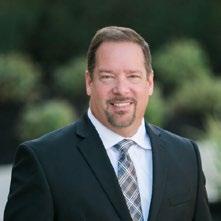
What is your driving focus?
Making an impact! Working at CBC allows me to do so. When I worked at the State Treasurer’s office, my mantra was that every dollar saved in fees, or earned in interest, was one less tax dollar that had to be raised. My goal is to reduce bank fees, increase interest income, and improve efficiencies at every public entity I partner with.
How do you accomplish that?
Utilizing current technology! It not only saves dollars, but also saves time and increases security. For example, by using ACH (Automated Clearinghouse) instead of writing checks, dozens of vendors are paid simultaneously. No more writing checks, obtaining signatures, mailing payments to each vendor—thus saving time and money. Plus, it protects the entity from check fraud.
Call me to see how I can help your district!
Jerry Legg, SVP – Director of Public Sector Banking 916.503.3356 | jlegg@bankcbc.com californiabankofcommerce.com

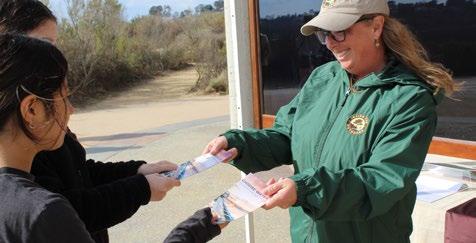
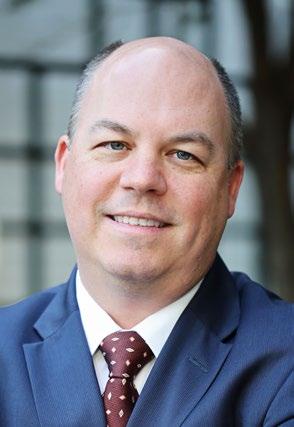
Board Secretaries and Clerks are often the unsung heroes of special districts. They are the backbone of effective governance, ensuring transparency, compliance, and seamless communication between boards, staff, and the public. Their meticulous work keeps districts running smoothly, from managing agendas and records to upholding legal requirements and fostering public trust. Yet, despite their critical role, these professionals often work behind the scenes with limited access to specialized resources and peer support.
That’s why I’m excited to announce the launch of CSDA’s new yearround online community for Board Secretaries and Clerks. CSDA now offers a dedicated space designed to empower, connect, and support these vital professionals. This platform will serve as a virtual meeting point for collaboration, knowledge sharing, and professional growth, ensuring Board Secretaries and Clerks have the tools they need to thrive in their roles.
Through this online community, members will have access to best practices, discussions on emerging challenges, and direct connections with peers who understand the unique demands of their work. Whether it’s navigating legislative updates, refining meeting procedures, updating policies, or seeking advice on public records management and requests, this platform will provide a trusted space for learning and engagement.
CSDA remains committed to supporting the professionals who help make special districts function at their best. This online community is another step toward ensuring that Board Secretaries and Clerks receive the recognition, resources, and support they deserve. I encourage all who work in this important role to take advantage of this opportunity, share their expertise, and continue shaping the future of special district governance.
Join the community today by logging in at csda.net and going to the ‘Communities’ tab at the top left of the home page... https://csda.net/communities/allcommunities
CSDA Special Districts Legislative Days return to Sacramento May 20-21, including the option to participate in pre-arranged visits with legislators, attend a networking reception and hear the latest advocacy updates from our team. With special districts facing existential threats to the necessary funding to deliver essential services, as well as major costly new mandates, this year’s Special Districts Legislative Days is a must-attend event. Don’t miss this opportunity to hear from California’s top decision-makers, build partnerships and strengthen the voice of local control.
CSDA members can now participate in a new digital platform tailored to address the unique needs and interests of California special district board secretaries and clerks. It is a dedicated space to share best practices and address common challenges related to this job position. The community serves as a valuable tool for accessing relevant shared resources, staying up to date on industry trends, and engaging in productive discussions.

It was with great sadness that we learned in January of the passing of Doug Siden, long-term East Bay Regional Park District (EBRPD) Board Member and steady proponent of accessibility for the community to the region’s 66 parks. It was because of his commitment to the community and to his district that we presented him with CSDA’s most prestigious award, the Hollingsworth Award of Excellence in 2020.
It was important to Doug that every segment of the community have access to the parks of the region. When Doug took on the challenge it simply felt like the right thing to do. He knew the public needed to be part of the journey, along with many partners in the community to make open access to beautiful parks a reality, so he formed partnerships. Along the way, he helped EBRPD partner with the East Bay Economic Development Alliance and the Martin Luther King Freedom Center, and he was appointed to the Golden Gate National Recreation Area and Point Reyes National Seashore by then-Secretary of the Interior Bruce Babbitt. Furthermore, Doug helped establish the San Leandro Creek Alliance and the Alameda County Creek and Watershed Symposium.
From his commitment to the community, his family, and his faith (he was also a Baptist minister for decades), Doug Siden’s compassion, dedication and commitment to the greater good has left a lasting impression on the region. We are proud to have known him and grateful for his work in the world of special districts.
CSDA is looking for Independent Special District Board Members or General Managers who are interested in leading the direction of the California Special Districts Association for the 2026 - 2028 term.
The CSDA Board of Directors is the governing body responsible for all policy decisions related to CSDA’s member services, legislative advocacy, professional development, and other resources for members. The Board of Directors is crucial to the operation of the Association and to the representation of the common interests of all California’s special districts before the Legislature and the State Administration.
The leadership of CSDA is elected from its six geographical networks. Each of the six networks has three seats on the
Board with staggered 3-year terms. Candidates must be affiliated with an independent special district that is a CSDA Regular Member in good standing and located within the geographic network that they seek to represent.
Any Regular Member district in good standing is eligible to nominate one person, a board member or managerial employee (as defined by that district’s Board of Directors), for election to the CSDA Board of Directors. The deadline for receiving nominations in the Northern and Sierra Networks is April 21, 2025. The deadline for receiving nominations in all other Networks is April 11, 2025. For more information, please contact Amber Phelen at amberp@csda.net right away.
The California Special Districts Association (CSDA) is excited to announce the launch of its newly updated website, designed to enhance member engagement and streamline access to essential resources. The revamped platform gets you to tailored information easily, from role-specific resource pages and advocacy news to member benefits and professional development, including our popular conferences, workshops and webinars. This user-
friendly design allows each member to connect directly with content that resonates most with their interests and responsibilities.
The new website will not only facilitate better communication but also empower members with the tools they need to thrive in their roles. To explore these enhancements and make the most of your membership, visit csda.net and log in today!
The CSDA Annual Awards showcase our members’ contributions in the communities they serve. The winners will be announced at our CSDA Annual Conference & Exhibitor Showcase in Monterey this August. We encourage everyone to submit their nominations now at csda.net/ awards. The deadline for submission is May 1, 2025.
Award Categories:
• Board Member of the Year
• General Manager of the Year
• Staff Member of the Year
• Ralph Heim Exceptional Outreach & Advocacy
• Chapter of the Year
• Innovative Program/Project of the Year (Large and Small District categories)
• Exceptional Public Outreach & Advocacy (Large and Small District categories)
• Excellence in Technology

By David Boyer, Partner; Suparna Jain, Partner; and Kevin Harris, Law Clerk; Atkinson, Andelson, Loya, Ruud & Romo
Unless otherwise required by statute, a legislative body may take action by resolution or ordinance. Special districts are created by statutory authority and their governing boards are subject to California’s sunshine laws, namely the Ralph M. Brown Act (“Brown Act”).1 Under the Brown Act, a vote taken by the board of a special district upon a resolution or ordinance is subject to the provisions of the act.2 However, there are notable differences between these common forms of collective board action.
Ordinances have a binding legal effect, requiring or prohibiting certain actions in certain circumstances, and are the result of a more formal process than resolutions. Ordinances are commonly introduced for a first reading at a public meeting and followed by a mandatory period in which public input on the draft ordinance is received. After the input period, the ordinance is read at a second meeting and the board can vote to approve the ordinance upon the motion of a board member. If substantive revisions are made to a proposed ordinance after its initial introduction, the ordinance needs to be reintroduced. Ordinances typically become effective thirty (30) days after their adoption and may be included in a code containing other local laws. “Urgency” and certain other types of ordinances can be adopted by a board vote immediately after their introduction. During the period before an approved ordinance becomes effective, agency staff can satisfy any applicable publication requirements.
1 Government Code § 54950 et seq.
2 Government Code § 54952.6 (defining “action taken”).
3 Government Code § 7920.000 et seq.
Resolutions are considered a less formal board action when compared to ordinances, often used as a mechanism to approve agreements, adopt policies, or set fees within a board’s jurisdiction. Resolutions are also used to express an agency’s intent to take certain action, often as part of a statutory process, or to express the board’s opinion on a specific matter (i.e., that a proposal received will best meet the agency’s needs). Resolutions generally must be included on a board’s published agenda prior to a meeting where the board will act on the resolution and becomes effective upon adoption by the board. Unless required by statute, resolutions do not need to be published following their adoption but remain subject to the public access requirements of California’s Public Records Act.3
The enforcement mechanisms that can be utilized to address violations of district ordinances are often found in the authorizing statutes governing a particular district. For example, some acts authorize ordinance violations to be treated as criminal offenses, punishable by fines, imprisonment, or both.4 Others may limit districts to investigating and correcting violations or pursuing preliminary or permanent injunctions.5 Due to the variety of enforcement options that may be available, districts should be aware that violating the Brown Act in either the ordinance or resolution process can result in the subsequent invalidation of said action.6
4 Government Code § 61064 (Community Services Districts); Health & Safety Code § 4766 (County Sanitation Districts).
5 Water Code § 35413 (California Water Districts).
6 Government Code § 54960.1 (unlawful action by legislative body).
Jim Markman
Roxanne Diaz
Ginetta Giovinco
Craig Steele
Dave Fleishman
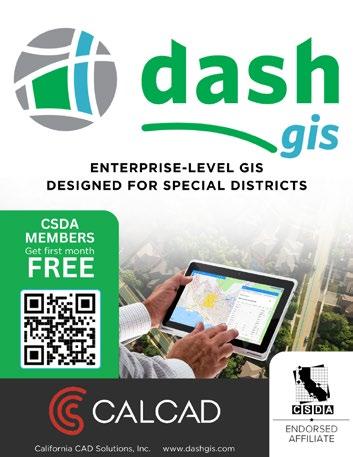








Special District Leadership Academy (South)
April 21 – 24, La Quinta (Palm Springs Area)
Special Districts Legislative Days
May 20 - 21, Sacramento
General Manager Leadership Summit
June 29 – July 1, Olympic Valley (Lake Tahoe Area)
CSDA Annual Conference & Exhibitor Showcase
August 25 - 28, Monterey
Special Districts Leadership Academy (North)
October 5 - 8, Redding
Board Secretary/Clerk Conference
October 27 - 29, Sonoma County
Special Districts Leadership Academy (Coastal)
November 16 – 19, Seaside (Monterey Area)
Virtual Workshop: Prevailing Wage: Basics & Beyond
April 16
Virtual Workshop: Policy and Procedure Writing
April 30
Financial Management for Special Districts
May 1, Sacramento
Leadership Lessons with District Managers
May 2, Sacramento
Virtual Workshop: Organizational Development
May 7
Virtual Workshop: Overview of Special District Laws
June 4
Pre-GM Summit Workshop: So, You Want to Be a General Manager?
June 29, Olympic Valley

To view more details and to register for conferences, events, workshops or webinars go to the CSDA Events Page https://qrco.de/bddc8t
CalPERS Update
April 15
GASB 68, 75, 87, 96, 101: What’s All the Fuss About?
April 29
Maximize Your Membership: Resources for General Managers
May 5
Innovative Approaches to Building Infrastructure: Design-Bid-Build
May 6
Successful Communication Strategies for Public Agencies
May 13
How Special Districts Can Implement BudgetNeutral Energy Efficiency Projects with LowCost Financing
June 3
Award Nomination Deadline
May 1, 2025
Send articles or ideas to membership@ csda.net for consideration in the California Special Districts magazine, CSDA eNews, the CSDA website, or on our social media channels.


By Steven L. Flower, Shareholder, Richards Watson & Gershon and General Counsel, Tri-City Mental Health Authority
California special districts and other local agencies rely on their logos to establish an identity and build trust with the public. So, the unauthorized use of a district’s logo— whether by political campaigns, businesses, or members of the general public—can create confusion and lead to legal complications. But what counts as an unauthorized use of your district’s logo, and what can you do to protect it?
It is important to distinguish upfront between government seals and government logos. Seals are official insignia used to authenticate documents and other formal government materials. In contrast, a government logo is a broader visual representation that an agency may use for branding, marketing, and public recognition. Both are worth protecting, but government seals often carry greater legal significance and are therefore granted greater legal protection. For example, use of an agency’s seal in campaign materials with intent to deceive voters is a
misdemeanor (Cal. Election Code § 18304), and forging a government seal can be punished as a felony. (Cal. Penal Code § 472.)
Unauthorized use of a special district’s logo is protected in different ways depending on the way in which it is misused.
• Political Campaigns and Elections – The use of district logos in campaign materials might not be subject to the specific criminal sanctions that apply to government seals, but they are still a form of government property and subject to the general rule prohibiting use of public resources for campaign activities. (Cal. Gov. Code § 8314.)
• Businesses and Commercial Use – Commercial use of a district’s logo without permission can potentially mislead consumers and risk damaging the district’s reputation. That law recognizes trademark rights for precisely this reason and a district’s logo is entitled
to the same protection as any trademark. Officially registered trademarks are granted greater legal protections, but every trademark holder must still guard against its misuse. Some agencies restrict use of their insignia to official business only to guard against implying an affiliation with any private business.
• Other Unauthorized Uses – Community organizations, advocacy groups, or individuals might use the logo for advocacy or public messaging. Even where such uses are clearly unauthorized, districts should tread cautiously. These cases can implicate free speech protections under the First Amendment and the line between fair use and misleading representation is not always clear-cut.
Districts have several options to safeguard their logos from unauthorized use.
• Trademark Registration – If a district’s logo is not already registered as a trademark, it should consider applying for trademark protection at the state or federal level. Registration strengthens legal claims against unauthorized users and provides additional enforcement mechanisms.
• Adopt a Logo Use Policy – Districts should establish clear, written policies governing the appropriate use of their logos. Specify who is authorized to use the logo, for what purposes, and any conditions or restrictions on use. Consider designating a custodian to oversee the use of the logo and ensure that only approved uses occur.
• Actively Monitor and Guard Against Misuse –Districts should actively monitor the use of their logos, including online and in political materials. Also consider proactive measures such as digital watermarking that can make it easier to establish when misuse has occurred. If an unauthorized use occurs, promptly demand that it cease. Legal counsel can assist with a letter demanding the immediate removal of the logo; referencing applicable laws and legal consequences for non-compliance.
• Legal Action – If the unauthorized use of the district’s logo continues despite warnings, districts may pursue legal remedies, including filing complaints for trademark infringement, false endorsement claims, or unfair competition.
A special district’s logo can be a valuable public asset, but only if steps are taken to protect against unauthorized use. Fortunately, there are a variety of legal tools available when facing possible misuse by political campaigns, businesses, or advocacy groups.








The Rancho California Water District Board of Directors has elected Brian Brady as President and J.D. Harkey as Senior Vice President for the upcoming oneyear term beginning in January 2025. The Board’s unanimous vote reflects their confidence in the leadership and expertise of these two distinguished individuals.
“I appreciate the Board’s confidence in my leadership and extend my congratulations to Senior Vice President J.D. Harkey,” said Brady. “I am honored to step into this role as Rancho Water advances innovative water sustainability and infrastructure projects to benefit our community.”
“I am excited to take on the role of Senior Vice President,” said Harkey. “It is a privilege to support President Brady and the rest of the Board as we address critical water challenges and opportunities in our region.”

Greg Lucas Rodriguez, the newly elected Desert Healthcare District & Foundation Board Director (and Board Vice-President) recently was named “Person of the Year” by The Palm
Springs Post. On Nov. 5, a majority of Coachella Valley voters selected Greg to be the representative of the District’s zone 1, following former Director Dr. Les Zendle’s decision to not seek re-election.

Congratulations to Director Delfina Gonzalez on her election as Director at Otay Water District.
“I am honored to have been elected by the community of division two and proud to serve Otay’s ratepayers,” said Gonzalez. “My vision is to prioritize long-term planning, responsible water usage, fiscal accountability, and customer service. I am committed to fostering sustainable, pragmatic solutions for South Bay’s water needs, growth, and the well-being of families and businesses. The District has accomplished a great deal through its board and staff, and I am dedicated to being part of this team to continue executing the District’s mission.”

Jess J. Ramirez was sworn in as president of the Oxnard Harbor District in January. As a long-serving member of the International Longshoreman’s and Warehouse Union Local #46, Ramirez has dedicated over 51 years to the
port. Over the years, he has shown an unwavering commitment to the community, and his leadership has been instrumental in striking a balance between maintaining the port’s status as a thriving economic engine and minimizing its environmental footprint. Ramirez’s term as President marks the culmination of a distinguished career dedicated to public service and community engagement.

Sarah Hussong Johnson, P.E. was recently promoted to the Director of Engineering at the Tahoe City Public Utility District. Ms. Hussong Johnson joined the TCPUD in 2014 and has made significant contributions throughout her tenure in her roles as Associate Civil Engineer, Senior Civil Engineer, and most recently as Engineering Manager. Sarah’s professional acumen, leadership skills and dedication to TCPUD’s Core Values will serve the TCPUD and its constituents well in this new role.


By Kristin Withrow, CSDA Communications Specialist
In the current political climate of rapidly churning news cycles, divisiveness and chaos, it’s critically important for leaders to serve as guiding lights to help their teams feel the innate importance of their work. This empowers your team to remain positive and focus on providing exceptional service even if confronted by a member of the community who may not fully understand or value the importance of your work. Helping each member of the team feel the ‘essentialness’ of their role drives a strong culture of teamwork that is laser focused on the mission of the agency. But how do you help your staff embrace the importance of their role and view themselves beyond ‘just’ the tasks on their daily list of duties?
Hall of Fame Inspirational Speaker Jon Petz will share his magical talents in a heartwarming, entertaining presentation at the General Manager Leadership Summit June 29-July 1 in Lake Tahoe to explore #Hashtag Worthy Leadership to help special district leaders foster pride in each member of the team.
It was Petz’ experience sharing his magic with a nine-year old boy who was hospitalized with a terminal illness that
synthesized the importance of embracing your impact on the world. When he was approached to perform for the young patient, he was told the boy’s wish was to meet famous illusionist David Copperfield, but timing was important, and they needed someone more accessible and available. Petz accepted the honor of performing in the boy’s hospital room, but in the back of his mind he was thinking, “I’m just an entertainer.”
When he arrived at the boy’s hospital room, the youngster was in the bed surrounded by his close family members, a few members of the medical staff, and a priest. Undaunted by the graveness of the situation, Petz opened with a sleight-of-hand trick that delighted the boy. Gaining momentum, Petz moved on to another trick, borrowing the priest’s credit card for the bit and proceeding to impress the room and leave the boy spellbound. His final trick was a multi-step card trick that included getting the boy interacting by signing a playing card, making selections from the deck, and being amazed when time after time his card turned up on top of the deck. By the time he was finished, the room had filled with medical staff gathered to watch and the young boy was awestruck and filled with joy.
Weeks later, Petz attended a wedding and bumped into the priest. He introduced himself and the priest remembered him, pulling out his credit card that still had Petz’ photo on the back (the result of the trick performed in the boy’s hospital room). The priest recalled how happy the boy was after Petz left the room and told him the boy had passed away that same day. The playing card used in the final magic trick was included in the boy’s memorial because it symbolized his last moments of happiness.
This experience helped Petz realize a fundamental truth he now shares with audiences: People are more than “just” their job. He expanded his thinking to understand he is someone who delights, inspires and helps people experience joy and wonder. Extrapolating from this truth to expand his role inspiring leaders: He helps leaders at all levels engage deeper into the purpose of what they do and why they do it - so they desire to perform at their best in work and in life.
Think about the last time you met someone new, and they asked you what you do. Did you tell them your job title and employer name? Now think about this: Are you “just” your job title working for “just” your employer? Let’s dig deeper to find more meaning for what you do (and why you do it).
Here are some questions Petz uses to help you get to your “I am” statement:
What do you do? Often, we describe this simply by our title. Go deeper. What do you actually DO?
Take it a step further: What is the purpose of your role?
Go one more step: Who does your role impact?
Finally: When you impact someone, what is the result?
Here is your anwer: “I am” <fill in the blank>
HERE’S
• What do you do? “I’m Jon, I’m a speaker and entertainer.”
• Tell me more, what do you DO? “I speak to companies on personal performance strategies, and I do it in a relevant, yet inspiring and energizing way.”
• What’s the purpose? “I help teams see a different perspective, realize the impact they have in a given
moment. I help them see that oftentimes the simplest moments are the ones that are most impactful.”
• Who does it impact? The “audience,” so the team, members, the company - leaders at all levels.
• What happens as a result? Leaders at all levels feel a sense of purpose behind their work. They better understand that the simplest moments can become the most meaningful in the lives of others. They engage in their work more deeply because they understand their work matters every day.”
• Therefore, I am: “A speaker and entertainer who helps leaders at all levels engage deeper into the purpose of what they do and why they do it - so they desire to perform at their best in work and in life.”
Try this exercise at your next staff meeting. It’s a terrific brainstorm for teams to expand their thinking and fully embrace the purpose and impact of their work. The resulting pride and energy will be felt in the community in the simple moments of interaction with an authentic, dedicated local government agent fulfilling the essential role that is the mission of your district.
If you haven’t already, it’s time to get registered for the General Manager Leadership Summit! For details, visit gmsummit.csda.net

WHO: Jon Petz, Hall of Fame Inspirational Speaker
WHAT: Keynote: #Hashtag Worthy Leadership
WHEN: Monday, June 30, 8:30 – 10:00 a.m.
WHERE: 2025 CSDA General Manager Leadership Summit
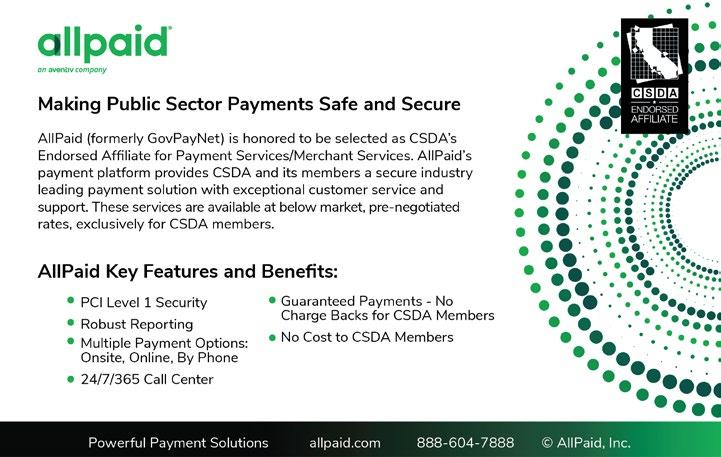










By CSDA Endorsed Affiliate VC3
Cyber threats are evolving fast, and special districts can’t afford to take security lightly. One simple but powerful tool to stay ahead of hackers? A password management system.
Think of a password management system as a digital vault, securely storing passwords so you don’t have to rely on memory—or worse, sticky notes. The tool creates strong, unique passwords tailored to each individual account— whether email, banking, cloud storage, or business applications—and ensures that no two logins share the same credentials.
Special districts handle everything from financial records to personal citizen data. A single weak password? That’s all it takes for a breach, fraud, or any unauthorized access to happen. According to the 2024 Verizon Data Breach Investigations Report, 77% of cyberattacks involve stolen or weak passwords.
There are many advantages to using a password management system, but the following key benefits ensure special districts can sleep through the night without waking up in a cold sweat.
Better Security – A centralized, encrypted repository that securely stores and protects all user credentials ensures only authorized access.
Eliminates Password Fatigue – A password management system eliminates the need to remember or manually enter multiple passwords.
Regulatory Compliance and Reporting – This tool helps special districts meet industry security standards by providing built-in monitoring, access controls, and detailed audit logs.
Would you trust one key for every lock in your special district? Probably not. Using weak passwords is just as risky. It’s time to secure the backbone of your special districts’ operations with a password management system.

A trio of blue-eyed mountain lion cubs suspected of being orphaned in Portola Valley have been making a splash in the news after being rescued and taken to the Oakland Zoo, serving as a reminder of the many challenges these important native wildlife face.
Concerned Portola Valley residents spotted the cubs and notified California Department of Fish and Wildlife (CDFW) and Midpeninsula Regional Open Space (MidPen) staff who had been monitoring the area for the suspected orphaned cubs for two weeks. CDFW staff made the call to retrieve the cubs from the private residential property, with requested assistance from Midpen rangers and biologists, and transport them to the Oakland Zoo for assessment and care as they were unlikely to survive without their mother. Mountain lion cubs need 1.5 to 2 years with their mothers to learn how to survive in the wild.
“Midpen staff have been a great partner throughout this incident,” said CDFW Information Officer Krysten Kellum. “All three cubs were found to be dehydrated during the vet exam at Oakland Zoo. We estimate them to be just shy of three months of age.”
A mountain lion suspected to be the cubs’ mother was hit by a car on Portola Valley Road. CDFW and Midpen staff searched for the mountain lion’s body after receiving reports from community members, however it had disappeared from the collision site and has not been recovered by CDFW, preventing DNA testing from being performed to confirm the relationship to the cubs.
To confirm the cubs are in fact orphaned, CDFW and Midpen staff continued to monitor the area for adult mountains lions using wildlife cameras deployed in Portola Valley and Midpen’s nearby Windy Hill Open Space Preserve.

While this incident did not occur within Midpen preserves, Midpen’s work to protect and connect undeveloped land in the greater Santa Cruz Mountains region supports farranging wildlife such as mountain lions in safely moving across the landscape, which is critical to their long-term survival. Mountain lions face many challenges linked to human development, including genetic inbreeding, vehicle collisions and rat poisons in the food chain.
Midpen is working on multiple projects and research partnerships throughout its public open space preserves aimed at helping mountain lions and people safely coexist. Planning is well underway for wildlife and trail crossings at Highway 17 near Los Gatos, a known wildlife roadkill hot-spot, to allow mountain lions and other wildlife to safely access the large habitats they need to survive. In partnership with the UC Santa Cruz Puma Project, Midpen is supporting a 5-year research project to learn more about how mountain lions use open space lands also frequently visited by people.
Mountain lions are a specially protected species in California, and the mountain lion population in the Santa
Cruz Mountain region is currently being considered for listing as a threatened species under the California Endangered Species Act.
“ Midpen staff have been a great partner throughout this incident...All three cubs were found to be dehydrated during the vet exam at Oakland Zoo. We estimate them to be just shy of three months of age.”
Krysten
Kellum CDFW Information Officer










By Derek P. Cole, Partner, Cole Hubert LLP
I’ve practiced municipal law for over 20 years. Of the questions I’ve fielded from clients, three stand out as the most frequent. It’s not possible to cover all the nuances of my answers. But below are the basics.
“Can we talk about (insert subject) in closed session?”
This has been the most frequent question. There are many grounds for convening in closed session, but I will focus on the one that I have usually been asked about—whether something can be discussed as potential litigation.
Of course, litigation against local governments is common. So, on one level, it is understandable to worry that a sensitive or controversial matter might find its way into court.
But the Ralph M. Brown Act (Brown Act) has strict standards. It allows potential litigation to be discussed only when (pay attention to the emphasized phrases):
“A point has been reached where, in the opinion of the legislative body of the local agency on the advice of its legal counsel, based on existing facts and circumstances, there is a significant exposure to litigation against the local agency.” (Gov. Code. § 54956.9(d)(2).)
This provision is loaded with phrases that allow discussion of potential litigation only when there is a known or realistic likelihood of a lawsuit. Another provision of the Brown Act confirms that the “existing facts and circumstances” allowing closed session often require written claims or actual threats of litigation. (Id., § 54956.9(e)(3)-(5).) Hypothetical threats are not enough.
In short, there must be a real potential of litigation to justify a closed session.
“Does Director Doe have a conflict of interest?”
I have almost as frequently received questions about conflicts of interest. For instance, a director is believed to be too opposed to a matter or has made comments that suggest she “cannot be fair.” So, I am asked, must she recuse?
It’s important to clarify what California law considers “conflicts of interest.” State statutes speak of these as involving economic interests. (Gov. Code, §§ 1090, 87100.) Broadly, a law known as the Political Reform Act disqualifies officials from participating in matters in which their financial interests may be materially affected. (Cal. Code Regs., tit. 2, § 18700(a).) Another statute prohibits officials from being financially interested in their agencies’ contracts. (Gov. Code, § 1090(a).)
Unless an official has one of these financially disqualifying interests, he usually may participate or vote. But sometimes there is another ground for disqualification. People often call this a conflict of interest, but the law refers to it as “impermissible bias.”
Whether impermissible bias exists depends first on the type of matter before the agency. When a matter is quasilegislative—such as the formulation of agency policies; setting of agency budgets; or adoption of fees, assessments, or rates—it is normal and appropriate for officials to have strongly expressed opinions before voting. But when boards consider quasi-judicial matters, which involve the application of policies or laws to facts—such as in public contracting, bid protests, or administrative appeals—they are expected to make decisions fairly and objectively. A director’s past comments can require disqualification if they show an “unacceptable probability of actual bias.” (Woody’s Group, Inc. v City of Newport
Beach (2015) 233 Cal.App.4th 1012, 1022.) If the director’s previous comments suggest she has “crossed the line into advocacy” for a particular matter, recusal is required. (Petrovich Dev. Co. v City of Sacramento (2020) 48 Cal. App.5th 963, 974.)
Elected officials are supposed to have opinions. For this reason, the threshold for disqualification is exceedingly high—and one I’ve rarely seen crossed.
“Do we have to answer all these questions?”
Finally, my agency clients have often received requests for detailed answers to a wide range of questions. Sometimes these requests are complex and have resembled interrogatories like those used in civil litigation. Examples include, “Provide a list of all contracts the agency has entered into since 2000.” Or, “Provide a breakdown of all the payments the agency has made to its outside vendors for the last ten years, including the names of each payee, date of payment, and amount.”
The standard feature of these requests is that they expect agencies to do a ton of work. Sometimes, the requesting parties are innocently unaware of the limitations on agency resources. They wrongly assume agencies can answer these questions with a click of a button.
Whatever the case, agencies have no duty to create a new record to answer questions like these. (Sander v Superior Court (2018) 26 CA5th 651, 669.) These questions, rather, should be treated as requests for existing public records. If these records provide the answers to the questions raised, the agency should produce them—and let the requesting parties answer their own questions.
Derek P. Cole is a partner of Cole Huber LLP and focuses his practice on municipal law and litigation. He may be reached at (916) 780-9009 or dcole@colehuber.com.
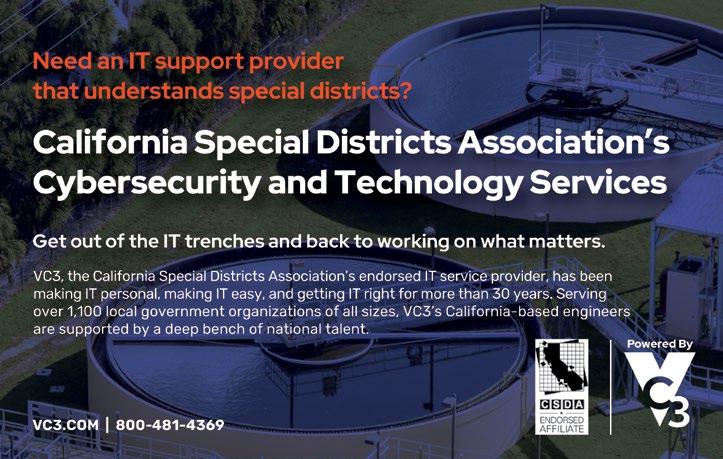




By Kristin Withrow, CSDA Communications Specialist
Do you ever wonder what happens to things you put in the trash? How long does each item take to decompose, does everything decompose, how efficiently do recyclables get recycled, and what about things that have some life left, but you don’t know how to get them to the people or places that might want them?
According to the Monterey Regional Waste Management Authority (ReGen Monterey) Director of Communications Zoe Shoats, they receive 550,000 tons of municipal solid waste each year. Their operation includes enough space in the landfill to continue operation for over 100 years, and while that is a long time, it isn’t infinite. As a society, consumers are demanding more single use packaged items, and manufacturing trends are making items that are easier to replace than to repair. At the same time, communities resist the creation of new landfills with a predictable ‘not in my backyard’ mindset.
Enter the world of waste management professionals whose challenge is to find solutions for the end life of millions of tons of waste each year. ReGen Monterey subscribes to a zero-waste hierarchy defined by the Zero Waste International Alliance. Toward the top of that hierarchy of waste mitigation is the primary category they can directly influence: Reuse.
“We started out by hosting a monthly flea market on the first Saturday of every month in 1993 to divert usable items from the landfill. It was so popular that by 1994 the store was open every Friday and Saturday,” recalls Shoats.
“The community response was positive, but the store was operating at a loss due to employment costs and the low price of goods sold. Before the store reopened after the COVID closure, we took the time to reflect upon what was working and what wasn’t. We realized partnering with a nonprofit with retail experience would better fit our mission.”
continued ......>
Thus began the next chapter of Last Chance Mercantile (LCM); a new partnership with the Veterans Transition Center of California, still driven by ReGen’s mission to reduce landfill materials, but now with a more professional retail flair. Proceeds from the store are used to support veteran’s programs, including housing, case management, educational programs, a food pantry, and a veterans jobs program at Last Chance.
The transformation of the store and salvage yard into an organized, stylized retail environment was a massive task that Last Chance Mercantile Director of Retail Operations Freya Read enthusiastically embraced. With a background in design and retail, which included 15 years as a designer with Pottery Barn, owner of a local antique store, and a former shopper of the old Last Chance, Read was uniquely qualified for the challenge.
Because Regen Monterey had continued to accept items during the pandemic closure, the items had piled up dramatically in the store and in the yard. “There was an immense amount of material,” recalls Read. “It was pretty daunting, but also exciting to have a lot of great merchandise and a blank slate to totally reinvent the LCM experience.”
Last Chance reopened in July 2020 with the help of 50 volunteer Marines who cleared the entire 8,000-foot warehouse in one day so the materials could be assessed, organized, priced, and staged into a retail format. The new team was able to reopen in six weeks.
The numbers show the success of this partnership. In 2024, the store sold nearly 200,000 items and diverted more than 550 tons of material from the landfill.
“Any agency that wants to undertake something like this will come to understand the value of combining different cultures,” Read said. “We have a veteran nonprofit culture, a waste management culture, and a creative retail culture, all working together. One of the amazing things about ReGen was that they were willing to think outside of the box to reinvent Last Chance, maintaining its commitment to promoting reuse, and through this partnership, we have created an even better reuse shopping experience for the community, a tax deductible donations program, all while supporting our veterans. It’s a win-win-win!”





Who: Beth Z, Your Nerdy Best Friend
What: Keynote – The Seven Things Your District Should be Doing with AI
When: Tuesday, July 1, 9:00 – 10:30 a.m.
Where: 2025 CSDA General Manager Leadership Summit

By Beth Niesenis, Your Nerdy Best Friend and our 2025 General Manager Summit Keynote Speaker
By now, you’ve probably seen an AI notetaking bot pop up in one of your online meetings. Maybe it was Otter.ai, Fireflies.ai, or some other bot quietly capturing every word. These tools promise to make meetings smoother, improve accessibility, and help keep records straight. Sounds great, right? Well, not so fast. They also come with a laundry list of challenges, especially when it comes to privacy, compliance, and meeting governance.
And because of your governmental roles, you have extra issues. Here’s a quick reference to the perks and the pitfalls of these AI-powered notetakers.
There’s a lot to love about AI notetakers:
• Spot-On Records – They capture everything, so you get precise, comprehensive meeting minutes.
• Better Focus – You can actually engage in the discussion and make eye contact with colleagues instead of frantically scribbling notes.
• Instant Summaries – No more excuses when it comes
to accountability. Many bots generate action items and recap meetings automatically.
• Quick Info Retrieval – Some let you “chat” with the transcript to find key details in seconds, just like you can with ChatGPT.
• Attendance Flexibility – AI notetakers can fill in when someone misses a meeting or arrives late.
• Easy Sharing – Did you forget to send the wrap-up email to the meeting attendees? Your notetaker can provide a link to notes and transcripts with a click.
• Affordable Options – Many of these tools are free or budget-friendly so you don’t have to fret about this budget line item.
Yes, they’re awesome. And yes, they can be dangerous. Here are just a few of the challenges that can pop up with notetaking bots.
• Privacy and Confidentiality – Consider this horror story: a woman interviewed online for a job. She left the call thinking she had nailed it. Her notetaker stayed continued ......>
in the room, and she was mortified about the negative things the interviewers said after she left. AI notetakers don’t discriminate between public discussions and sensitive information.
• Legal & Compliance Issues – You gotta love it when the lawyers get involved. Special districts must follow open meeting laws, public records regulations, and internal policies.
• Unauthorized Recordings – What if someone invites an AI bot without telling the group? It happens more often than you’d think.
• Breakout Room Confusion – AI bots might be assigned to their own breakout rooms, where they can randomly record another group’s conversations.
• Data Security Risks – Some AI tools use meeting transcripts to train their models. That’s a big deal if your meeting contains confidential or proprietary information, and a really big deal for special districts.
The worst thing your special district could do is to ignore the problem. Notetaking bots are here to stay, and the sooner you add guardrails to their use, the better.
Step
Even if your special district hasn’t formalized an AI policy, you should set up guidelines for AI notetaking bots. Your policy should include:
• Which meetings can and can’t be recorded.
• Whether external participants can use AI notetakers.
• Compliance with California’s Brown Act and other transparency laws.
• Data security measures to protect confidential info.
If your district wants to use AI notetaking, choose an official tool and standardize it across meetings. This will…
• Help your staffers know what’s allowed.
• Keep your meeting records consistent.
• Ensure compliance with regulations.
• Prevent random AI bots from crashing your meetings.
If AI notetakers are in use, make it obvious with these easy steps:
• Announce AI-assisted note-taking at the start of the meeting.
• Add a disclaimer to your meeting invites.
• Require participants to acknowledge recording policies before joining (just like Zoom notifications that pop up in recording meetings).
Use the features of your videoconferencing platform to cut down on unwanted notetakers and inappropriate recordings.
• If the meeting is in house, look for the setting to require authentication so only authorized participants (and bots) can join.
• Microsoft Teams and other platforms may let you block third-party app permissions.
• It’s always a good idea to enable the waiting room feature to prevent Zoom bombers. And it gives you the opportunity to screen non-human participants before letting them in.
• If a bot gets past your pre-meeting lines of defense, use your meeting host power to kick them out.
By the time you finish reading this sentence, AI will have advanced even more. Your AI notetaking policy needs to change with the times.
• Review AI notetaking policies periodically.
• When your videoconference platform announces an update, don’t just click “Remind Me Later.” Read the popup screen with the new features to discover new ways to manage the high-tech challenges we never imagined.
• Watch for changes to AI policies on the local, state and national level to stay in compliance.
AI notetakers can make your life so much easier, but only if managed properly. By setting clear policies, using tech controls, and staying transparent, special district leaders can make the most of AI tools while keeping meetings secure, compliant, and efficient. A little foresight now will save a lot of headaches down the road.
Beth Ziesenis is Your Nerdy Best Friend. She has written a whole shelf of books on apps and has spoken to more than 100 thousand audience members, including some at CSDA events. She will be our Day 2 Keynote Speaker at the 2025 General Manager Leadership Summit where she will elaborate on The Seven Things Your District Should be Doing with AI.
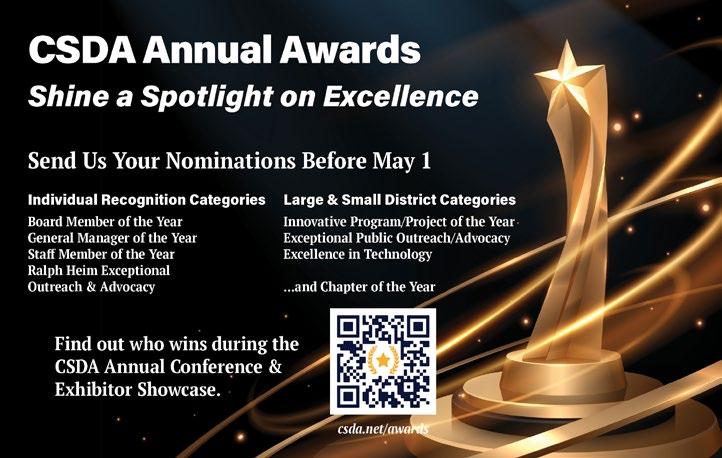
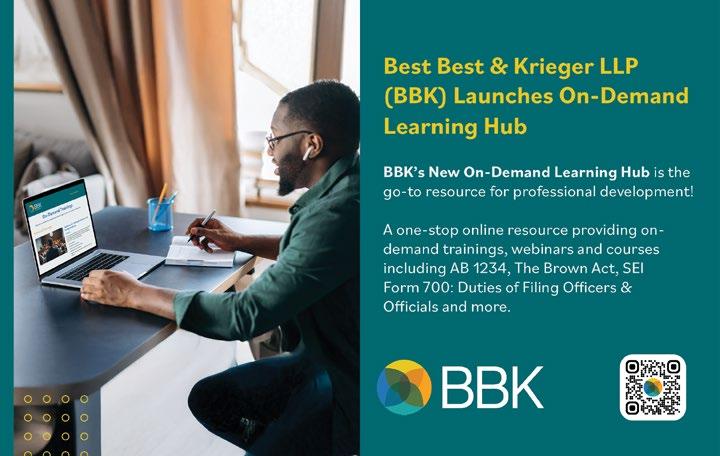





By Madison Tanner and Heather DeBlanc, Liebert Cassidy Whitmore
Engaging with an Artificial Intelligence (“AI”) service provider entails navigating a complex legal landscape. To develop a successful partnership, your organization must carefully address key legal considerations before signing a contract. This article outlines essential best practices for contracting with AI service providers.
AI companies and their services are relatively new in the business world. Your organization must conduct comprehensive due diligence on the AI service provider. Review the company’s status on the California Secretary of State website to confirm good standing, examine publicly available reviews, request references from other customers, and evaluate how long the company has been in business and how long the product has been operational. Investigate the company’s financial health to understand its overall stability and reliability. By assessing these factors, your organization can avoid partnering with an unstable or unreliable provider.
Your organization needs to identify the types of data it will share with the AI provider to provide the offered services. After determining what data will be shared, assess the legal restrictions or protections associated with that data. For example, consider whether the data includes employee information, pupil records, or non-public business information. If your organization shares any confidential information, the contract must clearly define each party’s responsibilities for complying with applicable laws. Additionally, the contract should specify who holds legal responsibility for a breach of confidential information. The contract should also explicitly state who holds ownership of the data (both input and output). Typically, your organization should retain ownership of its data. However, AI providers may request rights to aggregated anonymized data or data in a form that they can use for their own purposes. Scrutinize these provisions carefully to ensure the AI service provider does not use the data in ways that violate privacy laws or your organization’s policies.
Require the AI provider to assume liability in the event of a data breach. Specify their obligations under data breach laws and notification requirements to ensure clear accountability for immediate actions following a breach of confidential information. The contract should clearly state the consequences of any breach of the data obligations or contract violations. Include indemnification provisions that hold the AI provider accountable for any third party claims arising from their AI services. These provisions will help your organization mitigate potential fiscal risks in the event issues occur with the services.
Draft a strong termination provision to give your organization significant leverage throughout the contract term. Ensure the clause allows for termination if the AI provider’s services fall short of expectations, fail to meet your needs, or do not comply with the contract
requirements. Protect your organization in the event the AI provider abruptly cancels by requiring notice and reimbursement requirements.
Clearly define how the AI provider must handle data at the conclusion of the relationship. Specify the return or destruction of data and establish timelines for completing these actions.
Contracting with an AI service provider requires careful attention to multiple factors. By conducting due diligence, understanding data protection and ownership rights, establishing liability obligations, and anticipating contract termination, your organization can set itself up for a successful partnership. Although this list is not exhaustive, it highlights critical considerations for evaluating AI service contracts. Engaging legal counsel to review the agreement will further reduce risks and ensure the contract is tailored to the specific needs of your organization.

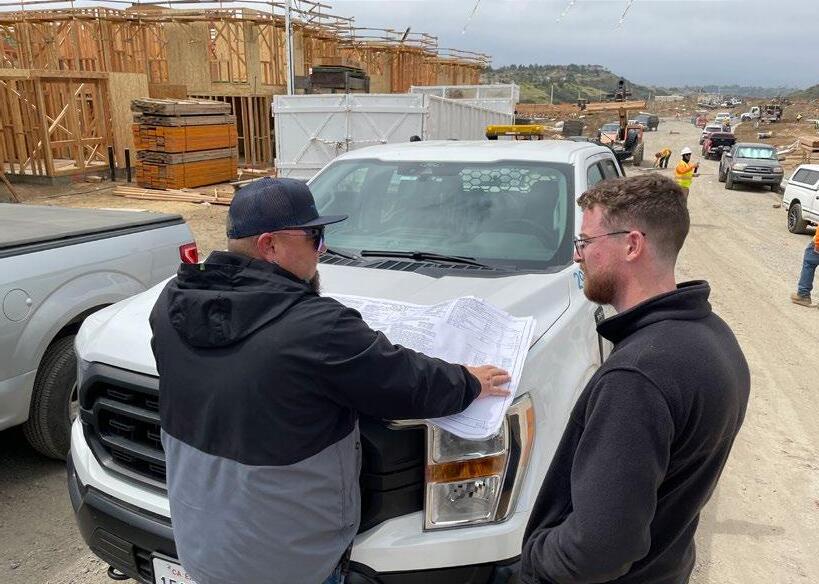
By Chris Robbins, Public Information/Conservation Supervisor, Vallecitos Water District
A partnership between Palomar College’s Water Technology Program and the Vallecitos Water District’s workforce development program is giving students a hands-on opportunity to explore water and wastewater industry jobs and increasing their career readiness. Palomar College professor Jacob Shiba and Vallecitos Water District Public Information/Conservation Supervisor Chris Robbins first discussed the idea in 2019. “We talked about having the interns spend time in each department so they would get the full depth and breadth of our employee roles,” said Robbins.
The district’s leadership and board supported the development of the program, but its implementation was delayed due to the pandemic. It is now underway, with seven students accepted into the program.
The internship is open to any Palomar College students who have taken a water technology course. Participants are selected through a competitive interview process. Shiba says the objective is to ensure Palomar students are ready to enter the workforce. “Palomar’s partnership with Vallecitos Water District is invaluable, and it’s really helped
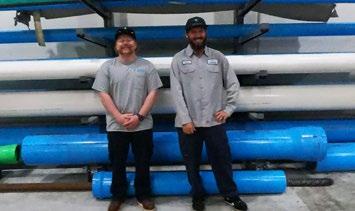
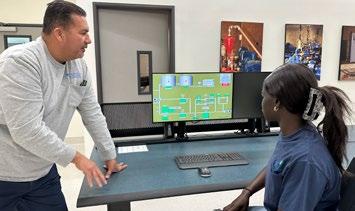
our program to increase the number of workplace learning opportunities for our students so that they are as career ready as they can be when they complete our program.”
Ben Crane learned about the internship opportunity from Shiba, and he decided to go for it. He also applied for, and received, a scholarship from the Vallecitos Water District. “I learned a great deal about our water distribution system, how our water is treated.”
Crane spent two days in each department, working alongside Vallecitos water and wastewater professionals. He said he enjoyed learning how to work in teams and was encouraged to ask questions, and everyone gave him insight on how he should approach his career.
Among his highlights was spending time with general manager James Gumpel, who was assistant general manager at the time. “He helped me understand what it’s like to be upper management. He gave me some insight from a seasoned guy who has been in the industry a while,” said Crane.
Palomar College student Logan Crawford recently completed the internship program. He said he’s improved his skills working with his hands, joining field crews in the meter department, and practicing his public speaking skills.
Crawford advises participants to keep an open mind. “You go through pretty much every department the district has to offer. It may not be something you think you’re interested in, but you might find yourself falling in love with (the job), and you had no idea. Keeping an open mind really helps. Every day I went to the internship, was a new experience.”
Intern Evan Fox was successful finding full time employment as a wastewater treatment operator with the San Elijo Joint Powers Authority after his internship. Crane, who is continuing his education as a geography major at Cal State San Marcos, encouraged other students to apply. “It’s a great opportunity. If you’re still pursuing your education … If you’re thinking of pursuing the water industry, this is a great opportunity to get your foot in the door.”
Phlavia went on to an advanced internship through the San Diego County Water Authority and is now a Wastewater Operator in training with the City of San Diego.
Shiba praised the partnership for giving students the opportunity to increase their career readiness, “so that they are ready to enter the water workforce to become a future water and wastewater specialist.” Shiba notes the importance of workforce development is what allows customers “to wash our hands, flush the toilet and take a shower 24/7.”
“It’s been a great success,” said Robbins. “Some of my favorite moments are when an intern realizes he or she likes a department more than they expected. The mechanical electrical department is often a surprise for students. They had not thought of all the pumps and motors we must maintain.”





As rain showers arrive, flowers begin to flourish, and parks come alive with activity, SDRMA is here to support you. From flood protection to spring maintenance safety tips, we are your reliable partner in ensuring your district remains safe, lively, and prepared for the season.
#SDRMACares for districts, allowing you to concentrate on nurturing our communities.
Maximizing Protection. Minimizing Risk.

Insurance coverage protection so your district can bloom
Customized risk control solutions that nurture growth and resilience
Safety education that cultivates a culture of awareness And so much more!
Scan the QR code below to discover more about our programs and offerings, designed to help your agency flourish.


Proudly serving California public agency special districts since 1982.
By Enriqueta Castro, CSP, SDRMA Risk Control Manager
As of January 1, 2025, the California Fair Employment and Housing Act (FEHA) includes provisions that prohibit employers from requiring job applicants and existing employees to possess a driver’s license when the job does not require them to drive. This includes removing driver’s license requirements in job postings, applications, and other materials where a driver’s license is not required. Employers are now required to go through an assessment process before including a statement that the position requires a driver’s license. The evaluation is essentially asking the following questions for each position and the answer must be yes for both.
1. Does the district “reasonably” expect driving to be one of the job functions of the position? AND
2. Does the district “reasonably” believe using alternate forms of transportation would not be comparable in travel time or cost to the district? The legislation states “alternate forms of transportation may include, but are not limited to, a ride-hailing service, taxi, carpooling, bicycling, walking”.
For those positions where driving is an essential function of the job, the answer may be easy to determine. For example, positions where employees work in the field and drive district vehicles to multiple locations, would most likely pass both questions.
However, for positions where driving is incidental to the position, question (1) might be a yes, but (2) is not as easy to determine. This may include employees who attend conferences, periodically drive to pick up supplies, make a bank deposit, or drive from one district location to another. In these scenarios, the district is required to determine if using other forms of transportation is feasible in time and cost.
When assessing the district’s job positions, consider the following:
• Job Position Evaluations - Evaluate each job position to determine if the two conditions have been met. These are the positions that require a driver’s license. If the position does not meet the conditions, requiring driver’s licenses would be prohibited.
• Document Revisions - If the position does not meet the conditions, revise relevant documents such as job postings, applications, and other materials that include driver’s license requirements for the position. The term “other materials” is not specifically defined in the legislation; however, we expect they will include job descriptions, handbooks, driver polices, and other documents where driver’s licenses are addressed.
• DMV Driver Record Requests – For new employees, if the position does not require a driver’s license, the district cannot require a DMV driver record. If the district participates in the DMV PULL Notice Program, driver’s names whose positions do not require a driver’s license should be removed.
• Alternate Transportation – When alternate forms of transportation are selected, it’s important to include an assessment of the potential workplace exposures the option may create. For example, if the district is considering the use of bicycles, e-bikes, or scooters, it’s important to develop procedures to protect the employee and district from potential injuries and liability exposure.
Please note, the information provided in this article is based on our interpretation of the legislation as of January 1, 2025, and does not guarantee compliance. We strongly encourage you to consult with your district’s legal counsel for additional guidance.
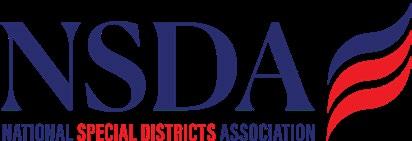
Does your agency benefit from nonprofit partnerships or tax-exempt municipal bonds? As the new Congress undertakes tax reform legislation, it is critical to provide insight and education now to prevent painful cost increases on local agencies and the communities they serve.
Some lawmakers in Congress are looking for ways to raise money for the federal budget and are considering tapping nonprofit resources. If this happens, many nonprofits would be forced to cut programs, turn people away or close their doors completely.
Tax-exempt organizations often partner with special districts in providing services ranging from parks and recreation to healthcare, libraries, resource conservation, and more. For example, a park or library foundation, or a nonprofit hospital. Further, special districts frequently coordinate with nonprofit organizations whose services benefit the mission of the district, such as low-income ratepayer assistance, a youth sports league, or a civic organization that volunteers or conducts service projects.
NSDA is one of a few dozen national organizations to join the Public Finance Network (PFN) in an ongoing effort to educate the 119th Congress on the value and importance of tax-exempt municipal bonds.
For more than a century, states, local governments, and nonprofits have financed infrastructure and community improvement projects using tax-exempt municipal bonds. This infrastructure makes possible nearly every aspect of daily life and is critical in building and maintaining a strong economy for every citizen and business in the country.
Through NSDA, the California Special Districts Association has joined the Community Impact Coalition and special districts can also support the effort to protect tax-exempt status for nonprofits by engaging on social media @communityimpactcoalition on Facebook, Instagram, and LinkedIn, or @CI_Coalition on Twitter.
NSDA is also encouraging all special districts to help protect tax-exempt municipal bonds by telling their story at BuiltByBonds.com, organized by the PFN coalition.
To learn more and get the latest on these important issues, and more action in Washington D.C. facing special districts and the communities they serve, visit nationalspecialdistricts.org. As always, watch for ways you can join voices with us. Calls to action, as well as downloadable resources, will be made available to all CSDA members through CSDA Advocacy News and weekly eNews.

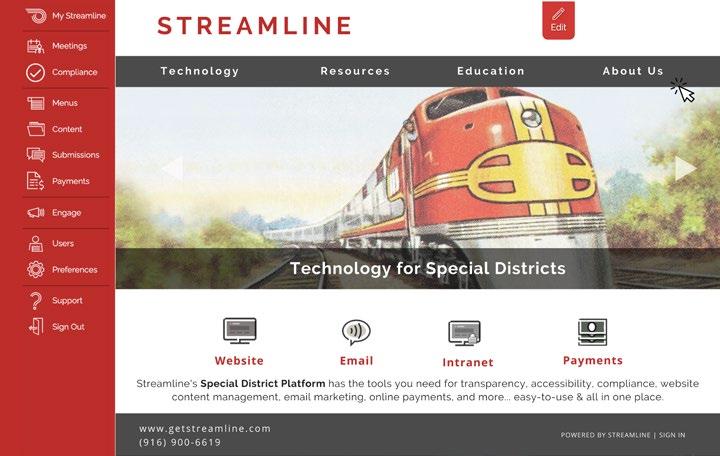
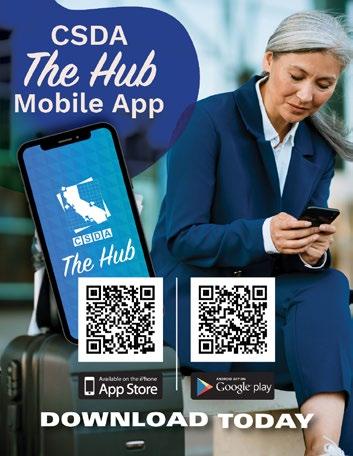


By Melissa Asher, Chief of Client Services, CPS HR Consulting
In today’s workplace, leveraging HR metrics is essential. HR plays a pivotal role in organizational success, and metrics provide the insights needed to align strategies with business goals. This article explores key metrics, their importance, and how organizations can use them to enhance performance.
HR metrics are more than numbers—they track performance, assess workforce initiatives, and guide informed decisions. They offer a clear view of what’s working and where improvements are needed. By focusing on actionable data, HR ensures efforts align with objectives and resources are used effectively.
To make the most of HR metrics, it’s essential to consider a few meaningful measures across four critical areas: Talent Acquisition, Performance Management, Employee Engagement, and Training & Development. Here are the top three metrics in each area and why they matter:
• Sourcing: Understanding where your hires are coming
from is critical for optimizing recruitment strategies. Tracking sourcing data, where your successful hires are coming from, ensures your efforts are targeted toward the most effective channels, reducing the cost and time to hire.
• Turnover Rates: Both voluntary and involuntary turnover data reveal patterns that help identify retention issues and inform strategies for improvement. Is everyone leaving one department? What is happening there with workload, supervisor/employee relations or market compensation?
• Workforce Composition: Monitoring diversity, tenure, and skill sets provides insight into the overall health and sustainability of your talent pool. This information provides important insights into when and how you should plan to recruit new talent.
• Productivity Measures: Assess responsiveness, quality, and output to ensure individual and team performance aligns with organizational goals. As a special district, you are always responding to customers. How is your team doing? Are they creating fans through their interactions and work product?
• Performance Management Plan Completion: Tracking completed plans holds supervisors and employees accountable for performance standards and improvement. The phrase “what gets measured, gets done” holds true. Innovative special districts don’t just happen, there are thoughtful steps that move the organization forward, starting with supervisor and employee performance conversations and plans.
• 1-on-1 Check-Ins: Regular performance conversations are vital for strengthening communication, clarifying expectations, and fostering continuous development. These check-ins also promote alignment and mutual understanding, helping to address potential conflicts or misunderstandings early. Left unresolved, such issues can escalate over time, leading to decreased productivity, diminished engagement, and, in some cases, formal investigations—outcomes that can be costly for both employees and the organization.
• Survey Response Rates: High response rates are a strong indicator of employee trust and engagement, while low rates may signal a disconnect that requires attention. To maintain participation without causing survey fatigue, many organizations are adopting short pulse surveys to gather quick, actionable insights. Even a simple question like “How are we doing as an organization?” can provide valuable feedback and gauge the current organizational climate.
• Overall Engagement Levels: Benchmarking engagement levels offers a clear picture of your workplace culture and morale. These insights can highlight strengths and areas for improvement, demonstrating how well your district is doing in fostering a positive environment. Remember, no organization achieves a perfect score, but striving for continuous improvement is key to long-term success.
• High and Low Scoring Survey Items: Prioritizing a few high and low scoring items makes the data more manageable and actionable. Addressing feedback effectively reassures employees that their input drives meaningful change, building trust in the process. A targeted approach, rather than attempting to tackle everything at once, resonates more with employees and demonstrates a commitment to focused, impactful improvements.
• Training Completion Rates: Tracking training completion rates, especially for compliance-related topics like safety and wellness, is a straightforward yet critical metric. These efforts not only ensure adherence to regulations but also bolster risk management and organizational readiness, ultimately safeguarding both employees and the district.
• Skill Improvement: Employees who feel supported through meaningful training and development opportunities are more engaged, motivated to go the extra mile, and better equipped to generate innovative solutions. Incorporating jointly set training and development goals into your district’s performance plans fosters a culture of growth and reinforces the district’s commitment to employee success.
• Internal Promotion Rates: Promoting from within is often the most effective and cost-efficient approach to filling leadership roles. Current employees who understand the district’s operations and culture can transition seamlessly into supervisory or management positions. High internal promotion rates reflect successful leadership development and employee readiness for advancement. Consider tracking how many employees apply, their success during the interview process, and subsequent hires.
The power of HR metrics lies in their ability to align HR activities with broader organizational goals. For this alignment to happen, it’s crucial to collect data from various available sources, including applicant tracking systems, employee surveys, performance reviews, and feedback from team meetings. Once collected, the data can be analyzed enabling HR professionals to identify trends, measure outcomes, and adjust strategies in real-time.
HR metrics are no longer optional; they are essential for navigating the complexities of today’s workforce. By focusing on a handful of meaningful measures, organizations can unlock their full potential. With the right data, HR becomes not just a department but a driving force behind organizational excellence.
For more insights on leveraging HR for impactful workforce strategies, connect with trusted HR advisors like CPS HR Consulting.
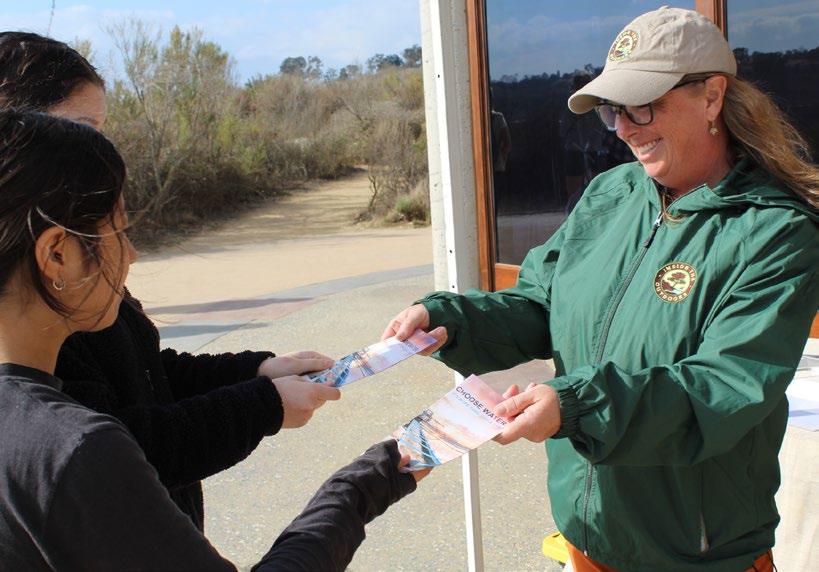
By Tiffany Baca, Executive Director, Water Energy Education Alliance | Public Affairs Manager, Municipal Water District of Orange County
The Municipal Water District of Orange County has long championed collaboration and long-term resource planning. Its leadership of the Water Energy Education Alliance (WEEA or Alliance) – a statewide coalition connecting educational institutions with the water and energy sectors – is a testament to this commitment. Among its initiatives, WEEA’s development and distribution of free, multilingual career brochures is an exemplary example, earning acclaim for their role in bridging the gap between students and sustainable, high-quality, livingwage jobs in these vital industries.
For some time, the water and energy sectors have been bracing for a critical workforce shortage, with many discovering the need to replace as much as 20% of their workforce now. While utility providers pride themselves on public education and outreach, this is the first time active, intentional recruitment has been necessary at this critical level.
To better understand the problem, WEEA initiated a report published in March 2023 by the Centers of Excellence for Labor Market Research. The comprehensive report emphasizes the growing demand for qualified professionals in these fields, and in response, WEEA developed recruitment brochures to help raise awareness about the rewarding opportunities available in water and energy. Today, water and energy providers, educational institutions, regional occupation programs, communitybased organizations, and many others have used the tri-fold brochures to promote job openings and illuminate career options statewide.
“LADWP uses the WEEA brochures as a resource for our community members exploring career opportunities in water and energy,” says Tracey K. Pearce, Los Angeles Department of Water and Power Chief People Officer. “With nearly 150 diverse civil service positions, from engineering and environmental science to skilled crafts and information technology, the brochures provide a clear introduction into these mission-critical fields.”
U.S. Census data reveals that nearly 44% of California households speak a non-English language at home. The brochures, initially available in English, were translated into eight additional languages—Spanish, Chinese, Vietnamese, Korean, Armenian, Tagalog, Farsi, and Russian. This strategic effort reflects California’s diverse communities and ensures inclusive access to quality career information.
“These multilingual recruitment brochures do more than just inform—they spark meaningful conversations about career choices for a brighter future,” says Joone Kim-Lopez, General Manager and CEO of Moulton Niguel Water District. “By providing career information in multiple languages, we help empower communities and families to explore livingwage, recession-proof opportunities together.”
WEEA employed multiple translators for each language to guarantee cultural and linguistic accuracy, creating materials that resonate with students, families, and educators alike.
“Public Affairs. “Used alongside educational initiatives like our teacher training and the launch of our new curriculum aligned with Common Core, NGSS, and CTE standards, we’re equipping teachers with all the tools they need to inform and inspire the next generation.”
The recruitment brochures are free to download and were designed with space to add a company logo to help create a personalized recruitment experience for those who use them. Brochures can be shared alongside job postings, offered at career fairs and community events, across social media channels, with school counselors, educators, community partners, and directly with students, expanding the limited talent pipeline.
The WEEA brochures are a companion piece to our water education programs. Used alongside educational initiatives like our teacher training and the launch of our new curriculum aligned with Common Core, NGSS, and CTE standards, we’re equipping teachers with all the tools they need to inform and inspire the next generation.”
Amanda Fine
Eastern Municipal Water District Director of Strategic Communications and Public Affairs
From its inception, WEEA has fostered inclusive partnerships that have significantly amplified the reach and impact of the brochures. More than 100,000 print copies have been distributed across California, with 30,000 directly mailed to educational institutions and water districts. The brochures have become a staple at career fairs, after-school programs, and industry conferences.
“The WEEA brochures are a companion piece to our water education programs,” says Amanda Fine, Eastern Municipal Water District Director of Strategic Communications and
Since their launch, the brochures have garnered significant attention. The effort has highlighted careers and elevated the visibility of water, wastewater, and energy providers statewide.
For more information about WEEA and to download these free brochures in nine languages, visit https:// mwdoc.com/weea.
WEEA is a statewide alliance comprising more than 250 participating organizations and growing. WEEA is administered and led by the Municipal Water District of Orange County and sponsored by the Metropolitan Water District of Southern California, Los Angeles Department of Water & Power, Water Replenishment District of Southern California, Tomorrows Talent, Eastern Municipal Water District, Moulton Niguel Water District, and Western Municipal Water District. The Alliance receives in-kind support from the California Environmental Education Foundation and California Community Colleges.


From the Desk of California CLASS – February 2025
A well-developed investment policy is crucial for special districts, ensuring clarity in investment objectives, allowable instruments, and compliance with relevant statutes. Here are ten tips to help you create a sound and comprehensive investment policy:
Define Covered Funds: Clearly outline which funds are governed by the policy and which require separate policies. Certain funds, like bond proceeds or pension funds, may have different investment objectives that are better managed independently.
Articulate Objectives: Write a clear and concise statement of investment objectives. This should describe how your special district will achieve its goals and provide guidance for decision-making. The Government Finance Officers Association (GFOA) offers a Sample Investment Policy with explicit statements of objectives.
Establish Standards of Care: Include a section addressing delegation of authority, prudence, ethics, and conflicts of interest. Specify who is responsible for the investment
program and cite the prudent investor standard to guide investment decisions.
Know Your Investment Statutes: Familiarize yourself with relevant statutes to ensure that allowable investment instruments are appropriate for your program. Some policies may borrow language from state statutes that include unsuitable instruments for public entities. It is often prudent for public entities to adopt stricter standards than those required by law.
Specify Allowable Instruments: Use explicit language to define allowable investment types, credit criteria, maturity restrictions, and diversification requirements. Clear definitions help mitigate misinterpretation and protect against imprudent investment decisions.
Diversification Guidelines: Avoid arbitrary percentages for diversification; instead, establish target guidelines like limiting investments in a single issuer to a maximum of 5% of the portfolio. This approach allows for flexibility and adapts to changing market conditions while reducing risk.
Collateralization Requirements: Specify collateralization for deposit-type investments in the policy, including allowable collateral securities and collateral ratios. This requirement helps safeguard public funds.
Third-Party Custody: Require that securities be held in third-party custody arrangements. This protects the public entity from credit risk associated with the bank and allows for easy transfer of securities if needed.
Performance Benchmarks: Determine relevant benchmarks for gauging performance. Ensure that the weighted average maturity (WAM) of the portfolio aligns with the benchmark for appropriate performance comparisons, allowing for flexibility in a dynamic investment environment.
By utilizing this checklist, special districts can ensure their investment policies are comprehensive and effective. The GFOA provides a Sample Investment Policy with expanded examples, available at GFOA’s website.
Public Trust Advisors, LLC, a registered investment advisor with the U.S. Securities and Exchange Commission, provides investment advisory services to the Fund. PMA Securities, LLC, an affiliate of Public Trust Advisors, is a broker-dealer and municipal advisor registered with the SEC and MSRB and is a member of FINRA and SIPC and provides marketing, and securities and other institutional brokerage services to the Fund.
The information presented should not be used in making any investment decisions and is not a recommendation to buy, sell, implement or change any securities or investment strategy, function or process. Any financial and/or investment decision should be made only after considerable research, consideration and involvement with an experienced professional engaged for the specific purpose. All comments and discussions presented are purely based on opinion and assumptions, not fact. These assumptions may or may not be correct based on foreseen and unforeseen events. The information presented should not be used in making any investment decisions. Many factors affect performance including changes in market conditions and interest rates and in response to other economic, political, or financial developments. Investment involves risk including the possible loss of principal. No assurance can be given that the performance objectives of a given strategy will be achieved. California CLASS is not a bank. An investment in California CLASS is not insured or guaranteed by the Federal Deposit Insurance Corporation or any other government agency. Although the California CLASS prime-style fund seeks to preserve the value of your investment at $1.00 per share, it cannot guarantee it will do so. Please review the California CLASS Information Statement(s) located in the Document Center before investing. Past performance is no guarantee of future results. Any financial and/or investment decision may incur losses.
Public Trust is required to maintain a written disclosure brochure of our background and business experience. If you would like to receive a copy of our current disclosure brochure, privacy policy, or code of ethics please contact us.
Since 1988, CSDA Finance Corporation has been our members’ go-to resource for education on the municipal debt process. Check out our website for valuable insights, such as:
» FAQ’s on lease purchase financing and certificates of participation
» Case studies of past financings
» Helpful resources and articles
» No-obligation quotes for your specific project
Visit csdafinance.net or call 877.924.2732 for more information or to connect with one of our expert consultants.


Senator Durazo is a democrat currently serving Senate District 26 which includes parts of central and eastern Los Angeles and serves approximately 946,000 constituents.
How would you advise special districts who want to build on relationships with legislators and staff to best advocate for their district and community?
• Special districts are integral to providing public services, but not always the most visible aspect of government. So, anything that special districts can do to raise their profile and make known their good work is helpful.
• That might look like regular check-ins with legislators’ district offices, or participating with legislators on community events, like clean ups, and resource fairs.
• The Los Angeles fires are of course front of mind right now. Being proactive and reaching out to legislators to share the ways that special districts are serving the public when there’s a major disaster or event is another good way to show the importance of special districts.
• Legislators always want to know how to help meet the needs of local governments in their district, but it’s also crucial for us to hear when special districts are going above and beyond to support their communities and themselves.
How has your role as Chair of the Senate Local Government Committee helped you advocate for your constituents?
First of all, it opened my eyes a bit just to the range of services that local governments provide and the roles that local officials play in helping their communities function
well. Local governments touch every constituent directly and indirectly, and I am more knowledgeable about that now. It has also helped me become more aware of how the relationship with local governments can be like any other, with push and pull. Local governments are great assets, and we need to support them. Sometimes they need a push to go a bit farther than they want to on their own. And in this role, I have an opportunity to do both.
What are your current and long-term policy priorities, particularly as they relate to the governance and operations of special districts and other local governments?
My highest priority for legislation that comes through committee has been to ensure that the public receives a benefit from the bills that we pass. It sounds simple, but we see a lot of bills that help this group or that group, but the benefits may not make it to the renter working multiple jobs while trying to support a family.
This becomes clearest on housing affordability. We have bills that help developers build more housing, but these bills don’t always have a way to make sure that we are providing housing that is truly affordable to Californians. So, if we are giving benefits to developers, we also need to make sure that the developers are sharing that wealth with the community by providing housing units that people can afford or other benefits.
Can you please share your highlights and biggest accomplishments during your Senate terms?
As Chair of the Local Government Committee, I’ve gotten affordability requirements into several key bills that didn’t have them. For example, SB 937 (Wiener, 2024) gave a break on impact fees to new housing developments (costing local governments money!), but I made sure that we got some affordable housing in exchange.
















Actuarial Retirement Consulting, LLC www.awenarc.com


AllPaid www.AllPaid.com
California CAD Solutions (CALCAD) www.calcad.com
California CLASS www.californiaclass.com
CPS HR Consulting www.cpshr.us
CSDA Finance Corporation www.csdafinance.net


Atkinson, Andelson, Loya, Ruud & Romo www.aalrr.com
Best Best & Krieger www.bbklaw.com
California Bank of Commerce www.californiabankofcommerce.com/

Enterprise Mobility www.enterprisemobility.com
GovDeals www.govdeals.com
Special District Risk Management Authority www.sdrma.org

Streamline www.getstreamline.com
Umpqua Bank www.umpquabank.com
Utility Cost Management, LLC www.utilitycostmanagement.com



Five Star Bank www.fivestarbank.com
Liebert Cassidy Whitmore www.lcwlegal.com
Richards Watson Gershon www.rwglaw.com
Golden Hills Community Services District has always valued efficiency, understanding that clear communication is essential for outstanding customer service. To boost efficiency, the district wanted to phase out paper maps using Google Earth to create a more accessible mapping option. After diligent effort over two years to convert all maps to digital format, they found there were accuracy issues that caused staff to spend time verifying logistics.

“We needed more accuracy and had simply outgrown Google Earth,” noted Operations Superintendent Davin Blain. Having achieved significant efficiencies in other areas, the district realized it was time to focus on using a geographic information system (GIS). After hearing from neighboring districts about the benefits they were gaining from their GIS systems, General Manager Christopher Carlson learned about CALCAD, a diamond level affiliate of the California Special Districts Association.
Brown Armstrong Accountancy Corporation www.bacpas.com
CalTRUST
www.caltrust.org
Centrica Business Solutions www.centricabusinesssolutions.com
Cole Huber LLP
www.colehuber.com
Complete Paperless Solutions
www.cps247.com
Eide Bailly CPAs
www.eidebailly.com
Kosmont Financial Services
www.KosmontFinancial.com
Laserfiche
www.laserfiche.com
Golden Hills CSD’s key priorities for a new GIS solution were to maintain their existing efficient workflows, enhance communication, and improve data accuracy. “We stopped the DashGIS™ demo partway through, saying, ‘Let’s go ahead—we’ve seen enough,” recalled Blain. “We were convinced that this GIS met both our current and future needs.”
The transition from decision to delivery took just over two weeks. Now, both field and office staff save valuable time by being able to answer most of their questions independently. “Everyone has access, and I see staff using it every day,” noted Blain, highlighting the positive impact of adopting DashGIS™ on their daily operations.
By embracing this GIS technology, Golden Hills CSD has significantly enhanced its efficiency and communication, ensuring better service for its community.
National Demographics Corportaion (NDC) www.ndcresearch.com
NBS www.nbsgov.com
Nossaman, LLP www.nossaman.com
Redwood Public Law, LLP www.redwoodpubliclaw.com
SiteLogiq www.sitelogiq.com
Slovak Baron Empey Murphy & Pinkney LLP www.sbemp.com
Stifel Investment Services www.sandrahedstromwheeler.com
Tyler Technologies, Inc. www.tylertech.com
more online at csda.net/value-benefits







